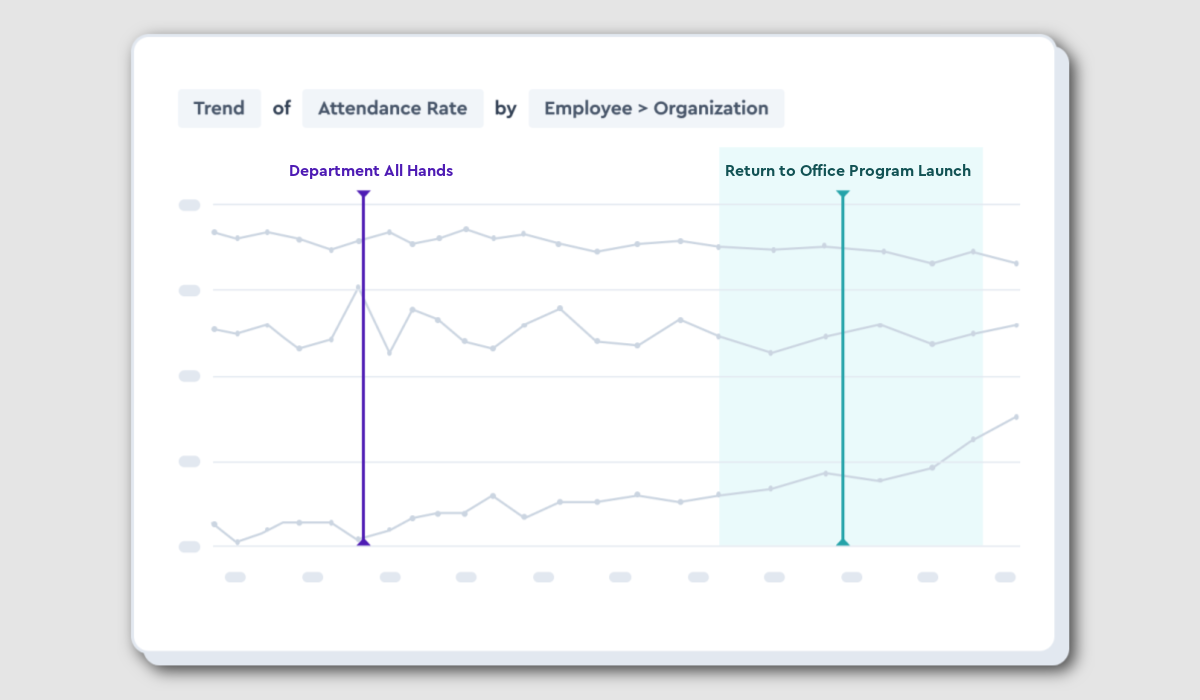7 Data-Backed Truths About RTO
New research about RTO programs shows employees prefer flexibility and choice, while mandates result in high turnover and recruitment difficulties. In all cases data is key—here are the facts.

Should you or shouldn’t you demand that your employees return to the office (RTO)? That’s likely a question that’s top of mind for many business executives and their HR advisors in 2024. The topic has remained hotly debated. Fortunately, now we are starting to see research published about the efficacy of these policies for organizations of all sizes based on learnings about what works and what doesn’t.
There is arguably a right way and a wrong way to establish fair RTO policies. While companies obviously have valid reasons for wanting some employees to be on-site, demands and ultimatums don’t sit well. The right way should always start with data-informed decision-making. The wrong way will likely result in increased turnover, low adoption, or, as in stories like this one, going viral for all the wrong reasons. An internal video from Internet Brands (parent company of WebMD) featured CEO Bob Brisco proclaiming: “We aren’t asking or negotiating at this point—we want you back in the office.” Forbes called it a “masterclass in how not to call workers back to the office.”
Forbes called it a “masterclass in how not to call workers back to the office.”
It’s no secret that flexibility matters to post-pandemic wizened employees and, increasingly, they indicate that they’re ready to change jobs—or leave the workforce entirely—if they can’t have that flexibility.

Putting pros, cons, and anecdotes about productivity aside, what does the research actually tell us about RTO?
It’s important to note that many of these research findings show that it’s the compulsory mandates and the unwillingness to consider flexible working arrangements—without evidence supporting why—that employees react negatively to.
What new research says about RTO
Stanford Professor of Economics, Nick Bloom, has done extensive research on the topic of returning to office. He points to some important truths about the RTO situation and its implications for employers.
1. An end to RTO
RTO (return to work) and not WFH (work from home) is what is actually ending, according to Bloom and despite many media reports to the contrary. He points to data to back him up, “RTO seemed to die in early 2023. Since then office occupancy and WFH days have been flat across the U.S.” He writes, predicting that it’s the five-day office week that’s dead instead. In his research based on input from more than 30,000 Americans since May 2020, he says, “post-pandemic, 32% of employees say they never want to return to working in the office.”
2. Employee-chosen schedules a "legal time bomb"
But, despite believing that employers should support employees’ need for flexibility, Bloom advises against letting employees pick their own WFH days. Why? He paints this scenario: “Single young men could all choose to come into the office five days a week and rocket up the firm, while employees with young children, particularly women, who choose to WFH for several days each week are held back.” It could be, he says, “both a diversity loss and a legal time bomb for companies.”
3. Hybrid is best
The hybrid work model is likely to be the norm in the future and best for enhancing productivity while also accommodating employee needs. Hybrid is best, Bloom says, because it balances the benefits of both in-office and remote work, allowing for in-person collaboration, innovation, and culture building, while also providing the flexibility and autonomy of remote work.

4. Be alert to DEI impacts
Bloom suggests that WFH can help women’s workforce participation while other reports suggest that WFH can hinder women and people of color (POC) due to proximity bias. But Bloom suggests that’s not the case, noting that. WFH can benefit certain groups, like working mothers, because of its added flexibility. Proximity bias, he suggests, can be handled through proactive and supportive management.
5. Mandates lead to turnover
Fortune points to three reports that, they say, “paint a stark picture” of a “brewing storm”— the Greenhouse Candidate Experience report, the Federal Reserve’s Survey of Household Economics and Decisionmaking (SHED), and Unispace’s Returning for Good report. Among the findings was the significant impact of RTO mandates on attrition—42% of companies with RTO mandates had higher turnover, according to Unispace.
42% of companies with RTO mandates had higher turnover, according to Unispace
6. Recruitment challenges
Just as employees are likely to want to leave companies with strict RTO policies, they’re not likely to want to join companies with these policies. In fact, according to Fortune, “almost a third (29%) of companies enforcing office returns are struggling with recruitment.”
7. A lack of evidence for positive productivity impact
While concerns about productivity are often cited as a reason to call employees back to the physical workplace, evidence suggests that being onsite doesn’t improve productivity. An Atlassian survey of Fortune 500 executives found that most leaders did not feel that in-office mandates were the answer to productivity challenges.
It’s important to note that many of these research findings show that it’s the compulsory mandates and the unwillingness to consider flexible working arrangements—without evidence supporting why—that employees react negatively to. In other words, it’s not “RTO” that causes a backlash, rather it’s the negative association that the concept has come to represent as a result of sweeping, unchecked policymaking.

People analytics helps to measure the success of RTO programs over time. Learn more about Visier's Return to Office Optimization solution

Successful RTO plans account for employee autonomy
While Bloom and others’ research provides data-informed cautionary examples of RTO policy roll-out gone wrong, other researchers, as Harvard Business Review reports, found that RTO policies do not necessarily have to undermine employee autonomy. If implemented strategically and transparently, these policies can align with human-centric corporate values such as employee well-being, growth, and inclusion.
If implemented strategically and transparently, RTO policies can align with human-centric corporate values such as employee well-being, growth, and inclusion.
In their analysis, HBR identified “three imperatives to help leaders navigate the return-to-office revolution in a way that strengthens, rather than damages, employees’ connection to the organization.” These included considerations such as preserving employee autonomy through establishing “guidelines” instead of “requirements,” planning in-person togetherness around projects rather than specific days of the week, and identifying how inclusion is and isn’t at risk in hybrid working arrangements.
And, of course, companies are different depending on the industry, their customers, the competition for talent, their size, and a host of other factors. These differences highlight the importance of companies using their people analytics data to determine potential negative impacts. Data and people analytics can be used to make these determinations objectively.
While some companies are pushing for RTO, employees prefer flexibility and choice. Mandated returns can lead to higher turnover, and recruitment difficulties, and may not yield the expected productivity gains. It’s critical to consider the diverse needs and preferences of your diverse workforce when designing RTO policies.
Data-informed decisions are always the best decisions.
Visier's solutions offer a comprehensive approach to understanding and managing hybrid and return-to-work policies by leveraging data analytics, custom solutions, and people-centric applications to provide organizations with the insights needed to optimize their workforce strategies.



